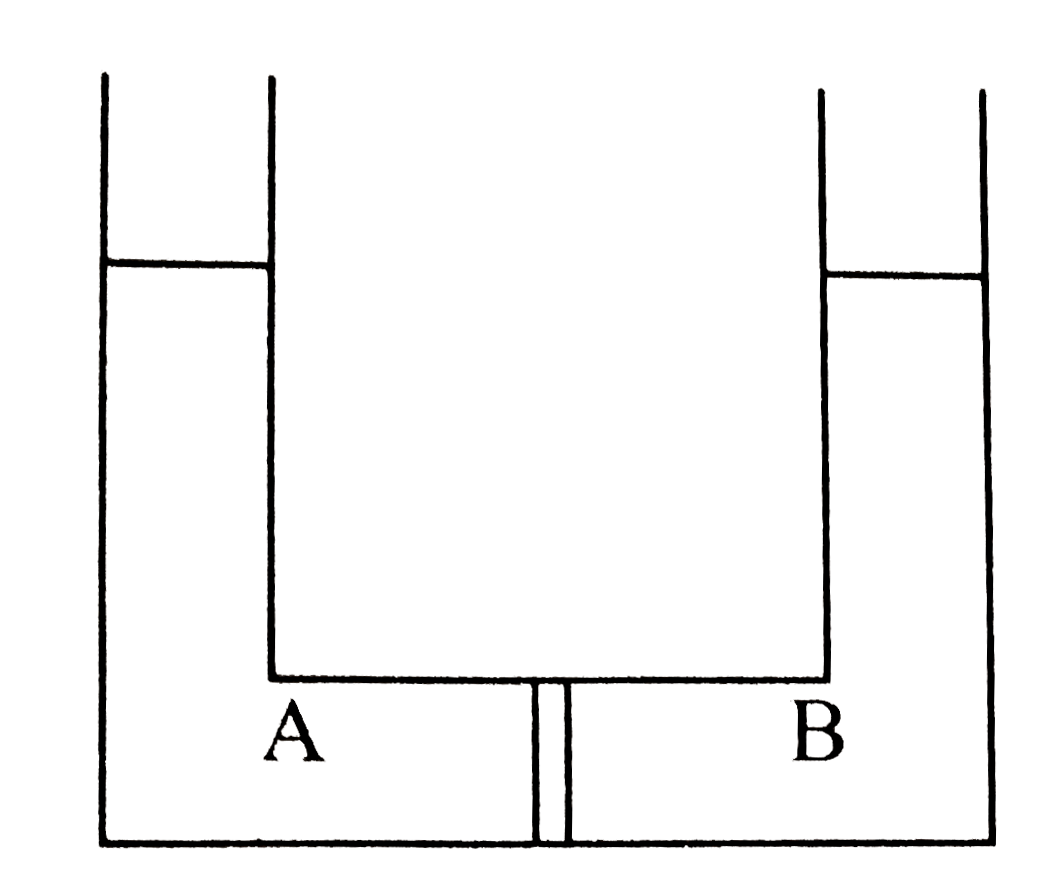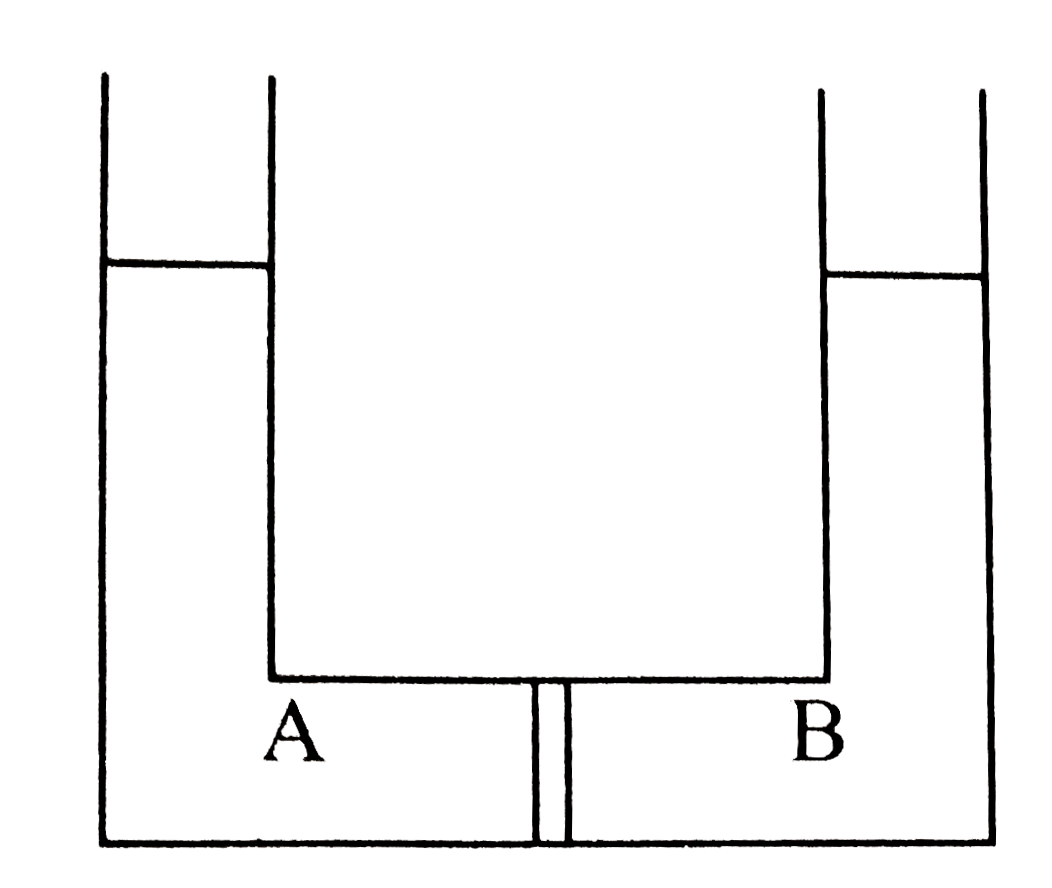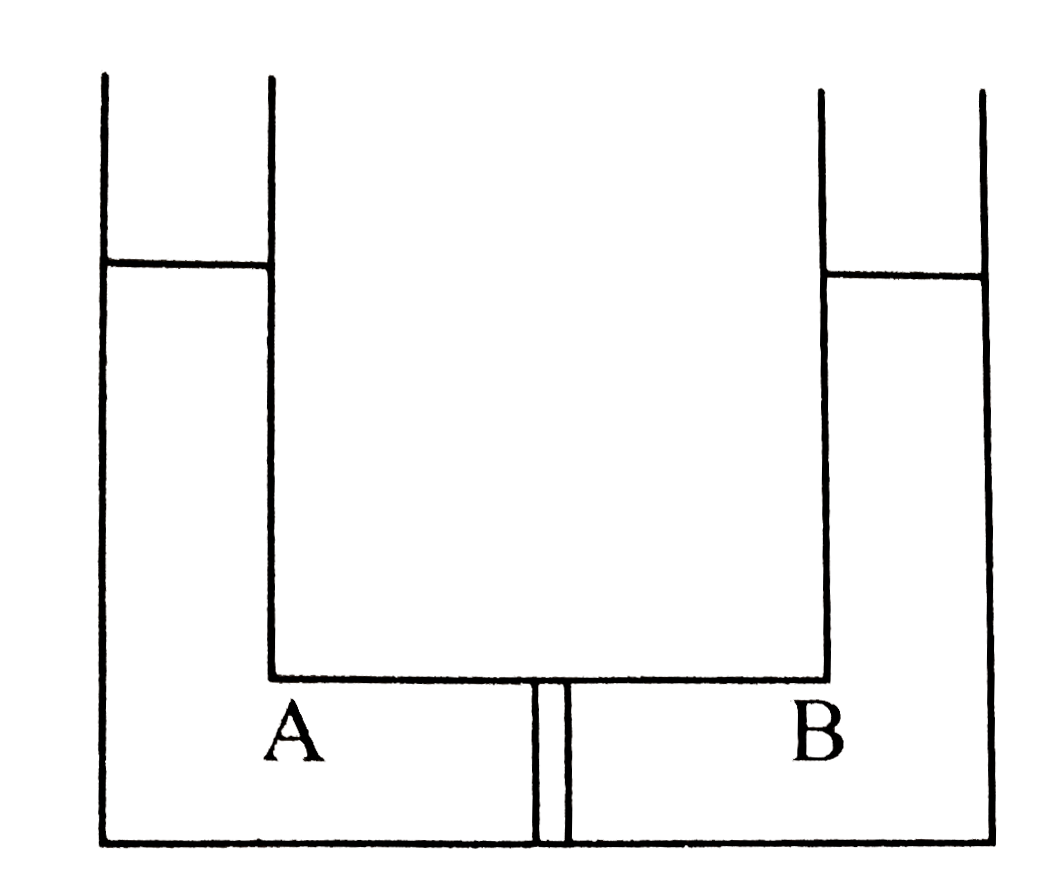Consider following solution:
0.1 mC6H5NH3+Cl−, 0.1 m Kcl, 0.1 m Glucose, 0.1 m Na2C2O4.10H2O
the solution with higher boiling point is 0.1 Na2C2O4.10H2O
the solution with higher freezing point is 0.1 m glucose
0.1 m C6H5NH3Cl and 0.1 m NaClwill have the same osmotic pressure
0.1 m glucose solution will have the lowest osmotic pressure
The correct Answer is:a,b,c,d
To solve the question regarding the given solutions, we will analyze each solution based on the Van't Hoff factor (I), which determines the colligative properties such as boiling point elevation, freezing point depression, and osmotic pressure.
1. Identify the Solutions and Their Concentrations:
- 0.1 m C6H5NH3+ Cl⁻
- 0.1 m KCl
- 0.1 m Glucose
- 0.1 m Na2C2O4.10H2O
2. Calculate the Van't Hoff Factor (I) for Each Solution:
- For C6H5NH3+ Cl⁻:
- This dissociates into 2 ions: C6H5NH3+ and Cl⁻.
- Therefore, I = 2.
- For KCl:
- This dissociates into 2 ions: K⁺ and Cl⁻.
- Therefore, I = 2.
- For Glucose:
- Glucose does not dissociate in solution; it remains as one molecule.
- Therefore, I = 1.
- For Na2C2O4.10H2O:
- This dissociates into 3 ions: 2 Na⁺ and C2O4²⁻.
- Therefore, I = 3.
3. Determine the Elevation in Boiling Point (ΔTb):
- The formula for boiling point elevation is ΔTb = Kb × m × I.
- Since all solutions have the same molality (0.1 m), the elevation in boiling point will depend solely on the Van't Hoff factor (I).
- The solution with the highest I will have the highest boiling point.
- From our calculations:
- C6H5NH3+ Cl⁻: I = 2
- KCl: I = 2
- Glucose: I = 1
- Na2C2O4.10H2O: I = 3
- Therefore, Na2C2O4.10H2O has the highest boiling point.
4. Determine the Depression in Freezing Point (ΔTf):
- The formula for freezing point depression is ΔTf = Kf × m × I.
- Similar to boiling point elevation, the freezing point depression depends on the Van't Hoff factor (I).
- The solution with the lowest I will have the highest freezing point.
- Glucose has the lowest I = 1, hence it will have the highest freezing point.
5. Determine the Osmotic Pressure (π):
- The formula for osmotic pressure is π = C × R × T × I.
- Since C, R, and T are constants, the osmotic pressure will depend on I.
- Comparing the I values:
- C6H5NH3+ Cl⁻: I = 2
- KCl: I = 2
- Glucose: I = 1
- Na2C2O4.10H2O: I = 3
- Therefore, C6H5NH3+ Cl⁻ and KCl will have the same osmotic pressure as they have the same I.
6. Conclusion:
- The solution with the highest boiling point is Na2C2O4.10H2O.
- The solution with the highest freezing point is glucose.
- C6H5NH3+ Cl⁻ and KCl have the same osmotic pressure.
- Glucose has the lowest osmotic pressure.
Final Answer:
All statements regarding the solutions are correct:
- A: The solution with the higher boiling point is Na2C2O4.10H2O.
- B: The solution with the higher freezing point is glucose.
- C: C6H5NH3+ Cl⁻ and KCl will have the same osmotic pressure.
- D: The glucose solution will have the lowest osmotic pressure.
- 0.1 m C6H5NH3+ Cl⁻
- 0.1 m KCl
- 0.1 m Glucose
- 0.1 m Na2C2O4.10H2O
- For C6H5NH3+ Cl⁻:
- This dissociates into 2 ions: C6H5NH3+ and Cl⁻.
- Therefore, I = 2.
- For KCl:
- This dissociates into 2 ions: K⁺ and Cl⁻.
- Therefore, I = 2.
- For Glucose:
- Glucose does not dissociate in solution; it remains as one molecule.
- Therefore, I = 1.
- For Na2C2O4.10H2O:
- This dissociates into 3 ions: 2 Na⁺ and C2O4²⁻.
- Therefore, I = 3.
- The formula for boiling point elevation is ΔTb = Kb × m × I.
- Since all solutions have the same molality (0.1 m), the elevation in boiling point will depend solely on the Van't Hoff factor (I).
- The solution with the highest I will have the highest boiling point.
- From our calculations:
- C6H5NH3+ Cl⁻: I = 2
- KCl: I = 2
- Glucose: I = 1
- Na2C2O4.10H2O: I = 3
- Therefore, Na2C2O4.10H2O has the highest boiling point.
- The formula for freezing point depression is ΔTf = Kf × m × I.
- Similar to boiling point elevation, the freezing point depression depends on the Van't Hoff factor (I).
- The solution with the lowest I will have the highest freezing point.
- Glucose has the lowest I = 1, hence it will have the highest freezing point.
- The formula for osmotic pressure is π = C × R × T × I.
- Since C, R, and T are constants, the osmotic pressure will depend on I.
- Comparing the I values:
- C6H5NH3+ Cl⁻: I = 2
- KCl: I = 2
- Glucose: I = 1
- Na2C2O4.10H2O: I = 3
- Therefore, C6H5NH3+ Cl⁻ and KCl will have the same osmotic pressure as they have the same I.
- The solution with the highest boiling point is Na2C2O4.10H2O.
- The solution with the highest freezing point is glucose.
- C6H5NH3+ Cl⁻ and KCl have the same osmotic pressure.
- Glucose has the lowest osmotic pressure.
All statements regarding the solutions are correct:
- A: The solution with the higher boiling point is Na2C2O4.10H2O.
- B: The solution with the higher freezing point is glucose.
- C: C6H5NH3+ Cl⁻ and KCl will have the same osmotic pressure.
- D: The glucose solution will have the lowest osmotic pressure.
Topper's Solved these Questions
- DILUTE SOLUTIONBOOK - NARENDRA AWASTHI ENGLISHCHAPTER - DILUTE SOLUTIONEXERCISE - leval-02
26 Videos
- CHEMICAL EQUILIBRIUMBOOK - NARENDRA AWASTHI ENGLISHCHAPTER - CHEMICAL EQUILIBRIUMEXERCISE - Match the column
1 Videos
- ELECTROCHEMISTRYBOOK - NARENDRA AWASTHI ENGLISHCHAPTER - ELECTROCHEMISTRYEXERCISE - Subjective problems
14 Videos
Similar Questions
The pH of the resultant solution of 20 mL of 0.1 M H3PO4 and 20 mL of 0.1 M Na3PO4 is :
View SolutionWhich of the following solutions in H2O will show maximum depression in freezing point?
a.0.1MK2[Hgl4] , b. 0.2MBa(NO3)2
c.0.3Mglucose , d.0.4MNaCl
View SolutionCalculate the pH of the resulting solution formed by mixing the following solutions:
(a) 20ml of 0.2M Ba(OH)2+30mL of 0.1M HCl
(b) 2mL of 0.1 M HCl+10ml of 0.01 M KOH
(c ) 10mL of 0.1 M H2SO4+10mL of 0.1MKOH.
View SolutionThe concentration of Ag⊕ ions in a saturated solution of Ag2C2O4 is 2.0×10−4M. Calculate the solubility of Ag2C2O4 in a solution which is 0.01M in H2C2O4.
View SolutionCalculate [H⊕],[C3H5OΘ3], and [PhOΘ] in a solution that is 0.03M⎛⎜ ⎜⎝C2H5O∣∣C−O−O−H⎞⎟ ⎟⎠ and 0.1MPhOH?Ka values for C3H5O3H and PhOH are 1.48×10−4 and 1.05×10−10 respectively.
View Solution
Compartment A and B have the following combinations of solution:
AB10.1MKCl0.2MKCl20.1%(m/V)NaCl10%(m/V)NaCl318gL−1glucose34.2gL−1sucrose320%(m/V)glucose10%(m/V)glucose
Answer the following question:
Indicate the number of solutions which is/are isotonic.
View Solution
Compartment A and B have the following combinations of solution:
AB10.1MKCl0.2MKCl20.1%(m/V)NaCl10%(m/V)NaCl318gL−1glucose34.2gL−1sucrose320%(m/V)glucose10%(m/V)glucose
Indicate the solution(s) in which compartment A will show an increases in volume.
View Solution
Compartment A and B have the following combinations of solution:
AB10.1MKCl0.2MKCl20.1%(m/V)NaCl10%(m/V)NaCl318gL−1glucose34.2gL−1sucrose320%(m/V)glucose10%(m/V)glucose
The solutions in which compartment B is hypertonic.
View SolutionCalculate pH of a buffer solution that contains 0.1M NH4OH(Kb=10−5) and 0.1 M NH4Cl.
View Solution
Compartment A and B have the following combinations of solution:
AB10.1MKCl0.2MKCl20.1%(m/V)NaCl10%(m/V)NaCl318gL−1glucose34.2gL−1sucrose420%(m/V)glucose10%(m/V)glucose
Indicate the solution(s) in which compartment B will show an increases in volume.
1) 1,2,4
2) 1,2
3) 2,3
4) 3,4
View Solution
